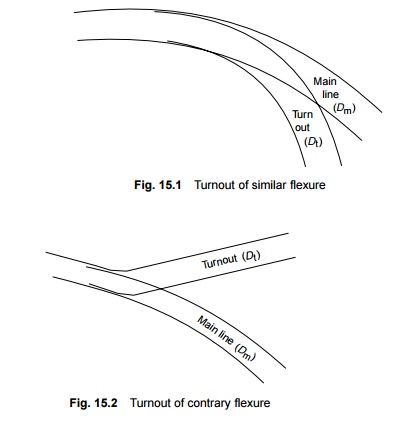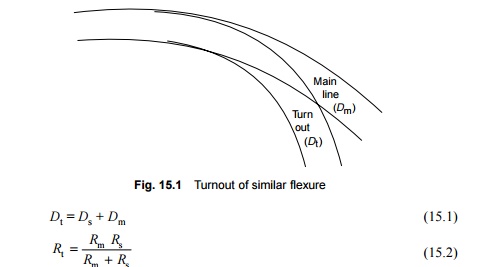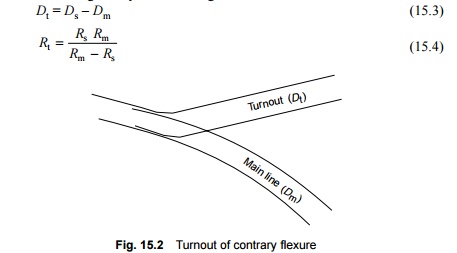Chapter: Civil : Railway Airport Harbour Engineering : Railway Engineering : Track Junctions and Simple Track Layouts
Railway Track Junctions: Turnout of Similar and Contrary Flexure

Track junctions are formed by the
combination of points and crossings. Their main objective is to transfer rail
vehicles from one track to another or to enable them to cross from one track to
another. Depending upon the requirements of traffic, there can be several types
of track junctions with simple track layouts. The most commonly used layouts
are discussed in the following sections.
Turnout of Similar Flexure
A turnout of similar flexure (Fig. 15.1) is one that continues
to run in the same direction as the main line curve even after branching off
from it. The degree of the turnout curve is higher than that of the main line
curve. The degree and radius of the turnout curve are given by the formulae

where Ds is the
degree of the outer rail of the turnout curve from the straight track, Dm
is the degree of the rail of the main track on which the crossing lies,
i.e., the inner rail in Fig. 15.1, Dt is the degree of the rail
of the turnout curve on which the crossing lies, i.e., the outer rail, Rs
is the radius of the outer rail of the turnout curve from the straight track,
and Rt is the radius of the rail of the turnout curve on
which the crossing lies, i.e., the outer rail.
Turnout of Contrary Flexure
A turnout of contrary flexure (Fig. 15.2) is one that takes
off towards the direction opposite to that of the main line curve. In this
case, the degree and radius of the turnout curve are given by the following formulae:

Here Dm is the
degree of the rail of the main track on which the crossing lies, i.e., the
outer rail in Fig. 15.2.
Related Topics